- Home
- Steven Pressfield
Killing Rommel Page 5
Killing Rommel Read online
Page 5
My regiment, as I said, was a Yeomanry formation, meaning horse cavalry mechanised and converted to tanks. I was a second lieutenant, healthy again and dead keen to get into the fight. “The Regiment” (as it, and all others of the army, referred to itself) was in no such hurry. The officers’ mess was a two-tiered affair, comprising the Old Boys, who had either been with the formation in its equestrian days (or whose fathers and grandfathers had been) and the New Sods like me, who cared nothing for such humbug and burned simply to get on with it. When it became clear that no action was coming for at least six months, I put in for No. 11 Scottish Commando, several of whose officers I knew from Golspie and Dornoch. Surely, I reasoned, the regiment could take no exception to an officer eager to serve. Indeed it could. When our commanding officer, Colonel L., learnt of my application, he called me on the mat and gave me a blistering rocket. Apparently such attempted defection reflected poorly on the regiment. He ordered me to recall my papers. I refused. From that hour I became in L.’s mind a bomb-throwing Bolshevik.
I hated Palestine. We trained and trained and went nowhere. In all that country, the only thing that lifted my spirits was Jerusalem. Every weekend that I could get away, I caught the No. 11 Qama bus, a multi-hued, tassel-bedecked Citroën crammed with chickens and squalling Arab urchins, often riding on the roof or clinging, standing, to the rear rails. I spent my days at the Jewish bookstore across from the King David Hotel or walking the stones that Jesus and the prophets had trodden. I felt like a Jew myself, an outcast who fitted in nowhere. These excursions, of course, only alienated me further from my brother officers, who thought me antisocial and unclubbable, and particularly from Colonel L., in whose eyes I was a first-rate Riot Acter or, worse, an intellectual—in his phrase, “someone who reads books”—the most damning appraisal that could be made of a junior lieutenant.
Rose meanwhile had followed me to the Middle East. She came out to Egypt by ship, in a convoy loaded with army troops and their stores, crossing the Atlantic from Glasgow to Rio de Janeiro, then back again, round the Cape to Durban and up the east coast of Africa, twelve thousand miles in six weeks. She landed at Tewfiq, the port of Suez, riding from there down to Cairo (“down” meaning north in Nile lexicon) in the back of a post van with six other girls who had pulled the same stunt for the same reason. When I think of this now, the daring seems beyond belief. The young are mad. Nor, as I said, was Rose alone. Scores of other young wives and fiancées made such jaunts, and thousands more would have done so if they could.
How did Rose engineer this adventure? Her sister Jemima was chums with Randolph Churchill, son of the Prime Minister. Through him Rose secured an interview with a general of Royal Signals. “My child,” declared this officer in kindness, “I would no more despatch you to Egypt than put you on a rocket to the moon.” Before dismissing her, however, he mentioned in passing the Navy’s shortage of civilian telegraphers. Rose went straight to the Admiralty. Within five weeks she had mastered civilian and naval code and had passed the telegrapher’s test. Nineteen weeks later she was in Alexandria, working sixty hours a week for Naval Intelligence at Raz-el-Tin and drawing both overseas and danger money.
I was still in Palestine. I still hadn’t seen her. The month was March 1942. Spring floods had temporarily stalled operations in the desert, but everyone knew that action would resume soon. Either Rommel would attack us or we would attack him. Other formations kept getting called, but never ours. A sheet had been posted in our orderly room called the Sugar List; it was for individual officers to volunteer as pool replacements for other units. My name stood on top every week. No call came. I continued applying for special forces. I volunteered for Advance “A” Force and for SOE, Special Operations Executive. I got as far as clearance for parachute training with “L” Detachment, SAS, before a notice from Division scratched this, declaring tank officers too critical to be spared. Despite this, I secured an interview with Jake Easonsmith, then a captain, of the Long Range Desert Group. I flew from Lydda in Palestine to Heliopolis at Cairo, catching a lift in a Bombay bomber, only to find that duties had called Captain Easonsmith away. I left a letter, in truth a plea, then couldn’t find a friendly flight out; I wound up riding back two days by bus, missing pay parade and being declared delinquent. My punishment, with another luckless subaltern, was to be made cinema officer. We ran the nightly screenings of American westerns and pre-war gangster films. The men called us the Warner Brothers.
In April the regiment was called forward to Egypt. Finally we were going “up the Blue,” meaning into the Western Desert, whose vast featureless surface and flat cloudless skies rendered the experience of being upon it more like being at sea than on land. Our formation became part of 22nd Armoured Brigade, which had been under 7th Armoured Division but was now under 1st. As for the tactical situation, it was this: Rommel had struck from El Agheila in January, driving Eighth Army all the way back to Gazala. There, a line of defensive positions held the Desert Fox for the moment. But everyone knew that the Afrika Korps would launch an assault again—and soon.
Stein was at the front somewhere. He was an OP, a forward observation officer, with 4RHA, the Fourth Royal Horse Artillery. His batteries of 25-pounders were on the move constantly (a letter from him straggled in once a month) as part of various “Jock columns”—mobile formations of armour, infantry and artillery that ranged the desert, striking when and where they could.
As for our regiment, we were transported via Kabrit to Abbassia Barracks, the Royal Armoured Corps base outside Cairo. At last we had tanks: reconditioned American Stuarts, called Honeys; upgunned A-13 and A-15 Crusaders; and new heavy American Grants. Even then we didn’t see action. We continued to train and to man defensive positions.
Our post was called a “box.” This was a wired and mined-in stronghold in the desert south of Mersa Matruh. Tied in with other boxes, most still under construction, ours formed part of a defensive line protecting a deep band of minefields and anti-tank ditches, the lanes between which were covered by artillery, with infantry companies and anti-tank batteries at selected strategic points, and mobile armoured columns arrayed in reserve. My command was a troop of four A-15 Crusaders, the “recce” or reconnaissance unit of a squadron of three troops, which itself was part of our regiment of four squadrons. We spent our days in dust-churning exercises, exactly as in Palestine, racing from one sector of the box to another, rehearsing our role as mobile reserve. This was preferable to what the infantry was doing, enduring hordes of stinging flies and digging slit trenches in the parched and stony earth.
The only action was the occasional “demonstration” or “reconnaissance in force.” A vacant zone of over two hundred miles still existed between our rear defensive line and the actual front at Gazala. Into this void our squadrons probed and patrolled.
The experience, though of no tactical significance, proved invaluable for us untested crews. We ventured past Sidi Barrani and Buq Buq and round the escarpment at Halfaya, darting as far west as Sidi Omar and Gabr Saleh. The Germans were there too—in reconnaissance units of armoured cars and fast light tanks, many of them our own Honeys and Crusaders captured last autumn over this same ground. We found ourselves at times behind the enemy and, at other times, they behind us. We loosed the odd pot-shot and even got into a few fox chases. And we learnt crucial knacks—where to look to find loot in abandoned vehicles (Bavarian chocolate, bottles of Liebfraumilch, Macedonian cigarettes); how to brew up tea under field conditions using a petrol stove or a hot engine block; and the proper technique for wolfing down a meal of bully burgoo (beaf and biscuits mashed together) without losing half to the omnipresent swarms of flies that appeared from nowhere the instant a tin was opened. But the most powerful impressions acquired during these forays were, first, the monumental scale of mobilisation of both Axis and Allies, the vast numbers of vehicles that were being brought up by rail and transporter and under their own power; and, second, the colossal magnitude of the destruction of last summer and autu
mn, particularly south of Fort Capuzzo and along the Trigh el Abd highway, where mile upon mile was strewn with hulks and derelicts and the graves of the luckless men who didn’t get away.
On 26 May, Rommel attacked the Gazala Line. Finally our regiment was called up. My squadron had been temporarily pulled back to the Mobile Repair Shops at Fuka to have new tracks fitted. The rest of the formation was moving forward from Mersa Matruh. In other words, we were split up.
The Gazala Line was a series of defensive boxes about two hundred miles forward of Mersa Matruh and three hundred from Alexandria. The line ran from the coast south, through a box called Knightsbridge and several others to Bir Hacheim, its southern pivot. This position was crucial because Rommel would inevitably try to run a “right hook” round it. If he succeeded, the whole line would collapse. Bir Hacheim was manned by Free French and Foreign Legionnaires. They would hold to the last man, we were told, to restore in the world’s eyes the honour of France.
Back at Fuka, my squadron was moving heaven and earth to get rolling. We still didn’t have our tracks. When they came, they had the wrong pins. Each night the BBC reported more furious clashes along the Gazala Line. Rommel’s Panzers had broken through; our fellows had pushed them back; the Afrika Korps was trapped within vast minefields; no, they were breaking out. Hour by hour, I and my squadron-mates grew more agitated. We had been training for weeks in the art of loading tanks onto special trucks called transporters. Now, with our tracks finally fitted, only half of these “low-loaders” showed up, the remainder having been assigned in some administrative balls-up to other regiments. The result was that our squadron of sixteen tanks set out for Gazala first on railway cars, then under their own power. It took us three days to reach Sollum, the first twenty-four hours travelling cross-country. By the time we rejoined the coast road, troops and squadrons had become hopelessly separated from one another and from higher command. My troop of four tanks fell to three and then two, as first one suspension failed, then an engine blew. No matter; we picked up two strays and pressed on.
The tactical unit of a British armoured regiment is the squadron. A squadron at full strength is three troops of four tanks each and a fourth headquarters troop of four or five tanks. The squadron leader is usually a captain. A lieutenant commands each troop, taking one tank as his own, with the other two or three commanded by a troop-sergeant and one or two corporals. Above the squadron is the battalion (sometimes called a regiment, this being the British army), which is three squadrons and a headquarters group, fifty-two tanks in all. Attached to each regiment are an “A” and a “B” echelon. These are the supply units, the lorries and trucks that shuttle between the rear depots and the fighting front, bringing up fuel and ammunition, oil, rations and water.
By the time my troop reached Sollum, a town on the coastal plain at the base of the escarpment that rises to the inland plateau, we had lost contact with battalion, brigade and division. Wireless contact was hopeless with the short range of our sets and the massive overload of the nets and their changing frequencies and protocols. The road at Sollum ascends in a six-hundred-foot serpentine to the raised desert above; here luck got two of our tanks rides on transporters, while the other pair were forced to grind uphill in creeper gear, making about a mile per gallon. In the crush I spotted a familiar command pennant and scrambled on foot to the Grant belonging to Major Mike Mallory, our 2/IC (second-in-command), who retained his fitter’s truck, two HQ tanks and nothing else. “Hell, Chapman, you’re the first familiar face I’ve seen in forty-eight hours!” Mallory crayoned my map, indicating Sidi Rezegh and Bir el Gubi in the desert ahead as objectives, marking positions with yellow for enemy and red for friendly.
“Of course that was yesterday,” he said. “The colours may have switched round by today.”
From the frontier wire a few miles ahead, Mallory said, we were still eighty miles out of the fight, which was raging round Bir Hacheim, the French-defended southern anchor of the Gazala Line. The Fighting French and the Legionnaires were putting up a heroic defence, but Rommel had sent his 21st and 15th Panzer Divisions, along with the Italian Ariete (“Battering Ram”) armoured division, in a wide, sweeping move to the south. If this succeeded, the French would have no choice but to withdraw. That was all Mallory knew, except that our orders were to find Rommel’s Panzers and stop them, if it meant sacrificing every tank we had.
Two days later my troop, following a line of markers, at last stumbled into a formation we recognised. The regiment lay in a dispersed formation, spread over miles, just east of El Adem in the flat, stony desert south of Tobruk. Tanks, armoured cars, infantry lorries and “B” vehicles straggled in continually from the rear, altering the shape of the disposition as they came up and worked themselves in, so that it took most of a day to locate my post, refuel and carve out a few hours to replenish oil and fluids, tighten tracks and snatch a spot of grub and sleep. My troop-sergeant, Hammond, had badly smashed both hands when a hatch crashed on to them; he was evacuated to the rear, his place taken by a corporal named Pease from 5th Royal Tanks whom we had picked up en route along with his A-13 and who was the closest thing to an old sweat we could muster. Squadron leader was Captain Patrick McCaughey, whom I had known at Magdalen. The first dawn our battalion was called to aid 150th Infantry Brigade and 1st Army Tank Brigade, who were under ferocious attack by the Afrika Korps’ 90th Light Division in what the Germans called a Hexenkessel, a witches’ cauldron, of minefields near the Knightsbridge box north of Bir Hacheim. By the time we got there, Rommel’s right hook had outflanked the French.
Bir Hacheim fell.
The 15th and 21st Panzer divisions were racing round our flank.
From that hour, the retreat started. It didn’t end till Rommel was beating at the gates of Alexandria.
In the cinema, it’s always the enemy tanks that advance first. In real armoured warfare, the form was the opposite. First came the enemy scout infantry on sidecar motorcycles. After the bikes you saw armoured cars, the four-and eight-wheeled SdKfz-222s and 234s that served as screens and recce units for the armour and as assault elements against foot troops and soft-skinned transport. Behind these came the motorised infantry, on trucks and in armoured half-tracks. The Afrika Korps’ infantry’s role was to take on our unarmoured gun crews and transport—anti-tank guns, artillery, echelon vehicles—and to protect their own A/T, the low-slung Pak 38s and the high-profile, long-barrelled 88s. The latter were enormous, with barrels as long as entire tanks; they sat high, ten feet off the desert floor, and were manned by crews of seven. Once you heard the sound of an 88, you never forgot it. The gun had been designed originally as an anti-aircraft weapon. It fired an extremely high-velocity, flat-trajectory shot that could penetrate 150mm of armour at two thousand yards. The thickest steel we had, on heavy Matilda infantry tanks, wasn’t even 100mm. An 88 could knock out a Crusader with one shot at a mile and a half. The killing range of the guns on our Honey and Crusader tanks was closer to five hundred yards. The 88s and Paks advanced and dug in, using ridges and folds in the ground for cover. Only then did you see the Panzers.
We new troops had been prepared for this; we had been trained to appreciate such tactics and to recognise them in action. But it took the real thing to make you a believer. Two days after El Adem, in rolling featureless country west of Bir el Gubi, my recce troop of four tanks was out in front of the battalion, mounting the reverse slope of a ridge, to peep over the brow, when our leftmost Crusader—Pease’s A-13—spotted two German Mark IIIs withdrawing at speed directly in front of us. A tank’s most vulnerable part is its rear end; we couldn’t pass up such a target. Up and over we went, hounds after the fox. Before we had dropped a hundred feet down the slope, two of our four tanks had been hit and stopped in their tracks, the crews of both baling out madly (a third, my own, though holed, remained driveable), while tungsten-steel armour-piercing rounds slammed into the stationary hulls. We never even saw the 88s. As we reversed flat-out, leaving one Crusader and a Ho
ney smoking on the sand and my Crusader hobbling for the repair shop, I could see the German commander in the turret of his Mark III, giving us a wave.
For the next five days our troops and squadrons waged what historians would later call the battles of El Adem and Knightsbridge but what to us felt like a succession of isolated and maddeningly inconclusive skirmishes. We are ordered by brigade to take up a position in anticipation of being immediately attacked. We scurry to the trig point and set up. No enemy appear. For hours we squat, broiling in the sun, hull-down along a ridgeline with our sister squadrons on either flank and HQ and “B” vehicles echeloned back for miles to the rear. Suddenly headphones blare with a report of German columns advancing round our flank. We decamp in a mad scramble, only to dash again into vacant waste.
A typical action, Day Four, reconstructed from my diary:
The skipper’s voice crackles over the wireless. “Hello, all stations JUMA, JUMA calling. Friends [meaning our forward screen of armoured cars] report enemy tanks, figures four zero, approaching from southwest, at range figures three zero zero zero. Orders: Three [meaning Troop Three, i.e., us], take a look but do not engage until all units come on line. Others conform to my movements. We will advance and hold for orders. Off.”
Forward goes my troop of four, reconstituted from the repair shops. It’s noon and the heat haze reduces visibility to a thousand yards. We rattle over one ridgeline, spread out at a three-hundred-yard interval, one tank in the point, two on the wings. Trailing us by five hundred yards, McCaughey brings up the other troops of our squadron; he’s in the centre rear. Through my earphones I hear him deploying his other tanks and reporting to regiment on what the armoured cars are seeing up front. We don’t know this then, but the enemy are tuned in too. The Germans have Signal Intercept trucks, manned by operators who speak English better than we do and whose detection skills are so keen that they can recognise the voices of our individual commanders down to squadron and even troop level. Already they’re reporting our movements and formation numbers to the column of Panzers advancing behind them. Now comes report from battalion that the enemy have stopped.

 The Legend of Bagger Vance: A Novel of Golf and the Game of Life
The Legend of Bagger Vance: A Novel of Golf and the Game of Life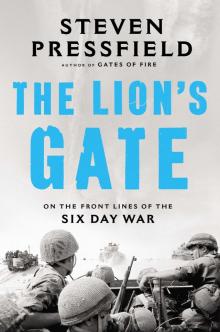 The Lion's Gate: On the Front Lines of the Six Day War
The Lion's Gate: On the Front Lines of the Six Day War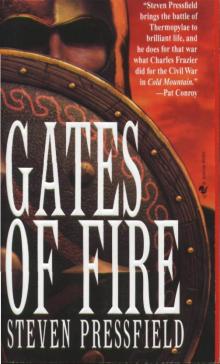 Gates of Fire
Gates of Fire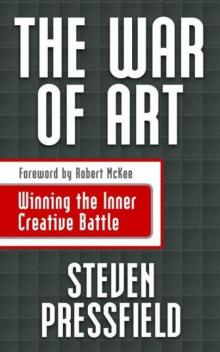 The War of Art
The War of Art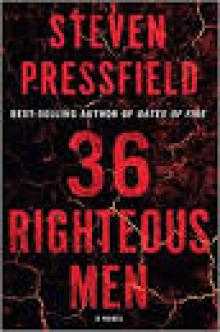 36 Righteous Men
36 Righteous Men The Virtues of War
The Virtues of War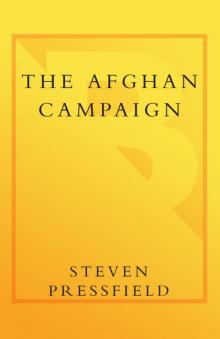 The Afghan Campaign
The Afghan Campaign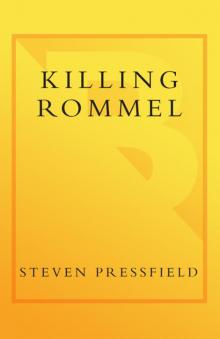 Killing Rommel
Killing Rommel Last of the Amazons Last of the Amazons Last of the Amazons
Last of the Amazons Last of the Amazons Last of the Amazons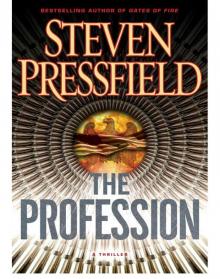 The Profession
The Profession Last of the Amazons
Last of the Amazons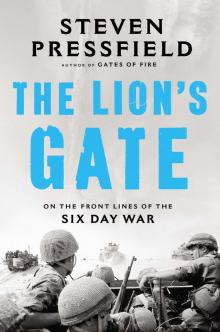 The Lion’s Gate
The Lion’s Gate The Legend of Bagger Vance
The Legend of Bagger Vance Virtues of War
Virtues of War Tides of War, a Novel of Alcibiades and the Peloponnesian War
Tides of War, a Novel of Alcibiades and the Peloponnesian War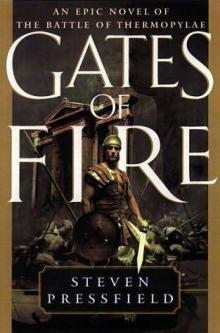 Gates of Fire: An Epic Novel of the Battle of Thermopylae
Gates of Fire: An Epic Novel of the Battle of Thermopylae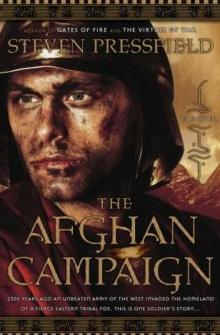 The Afgan Campaign
The Afgan Campaign